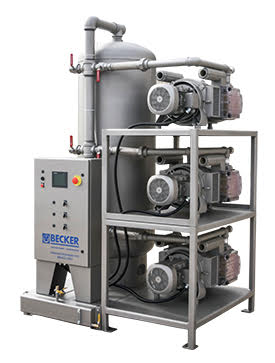Vacuum pumps are used for a wide range of applications in many different industries. Vacuum pumps remove gas from a sealed volume to leave a partial vacuum. Fluids then rush into the vacuum due to the difference in pressure gradients.
There are three kinds of vacuum pumps: positive displacement pumps, momentum transfer pumps and entrapment pumps. Most of the popular vacuum pumps are positive displacement pumps, so we will concentrate on them for this article.

Vacuum Pump Varieties Using Positive Displacement
Positive displacement pumps repeatedly expand a cavity, increasing its volume. Then part of the chamber is closed off and exhausted, pumping gas or fluids to their target areas. This is repeated over and over. Rotary vane pumps are the most common. Diaphragm pumps are also popular and have no oil contamination due to their design.
Liquid ring pumps have a high resistance to dust. Blower pumps and piston pumps are also somewhat common.
Applications
Vacuum pumps have numerous industrial and scientific applications. They are used for composite moulding, flight instruments, production of vacuum tubes and electric lamps, CRT’s, semiconductor processing, electron microscopy, photolithography, uranium enrichment, print presses, glass and stone cutting factories, cabinetry fabrication, and medical applications that require suction.
Medical applications include: radiopharmacy, radiosurgery and radiotherapy; mass spectrometers, instruments that analyse solid, gas, liquid, surface and bio materials.
Vacuum pumps are also used for decorative vacuum coatings on metal, glass and plastics, energy saving and durability of glass, ophthalmic coating, hard coatings for Formula One engine components, dairy equipment such as milking machines, vacuum impregnation of electric motor windings or wood, trash compactors, air conditioning service, sewage systems, vacuum engineering, fusion research and freeze drying.
To learn more or to speak to customer service, call Pump Solutions Australasia today: 08 9408 1544.
